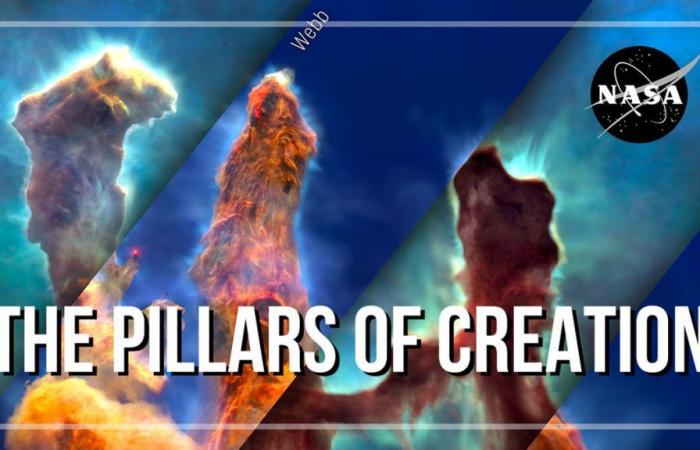The shimmering towers of cosmic dust and gas at the heart of the Eagle Nebula have inspired awe for decades since they were first captured. by the Hubble telescope. Now, NASA released The most detailed visualization of the iconic celestial structure, revealing all of its dreamlike features through multiple wavelengths of light.
This is what the Kings League looks like inside
Using data from the Hubble and Webb space telescopes, NASA astrophysicists have woven an unprecedented journey through the Pillars of Creation, traveling through the three-dimensional structure and revealing the dust clouds and embedded stars that make up its finger-like features. 3D visualization is based on observation data from a paper published in the Meteorite and planetary science diary.
The 2.5-minute video allows viewers to experience the Pillars of Creation in both visible light, as captured by Hubble, and infrared light, as captured by Webb. “As viewers fly past and between the pillars, viewers experience their three-dimensional structure and see how they look different in Hubble’s visible-light view versus Webb’s infrared-light view,” Frank Summers, the lead visualization scientist who led the film’s development team for NASA’s Learning Universe, said in a statement. “The contrast helps them understand why we have more than one space telescope to observe different aspects of the same object.”
The Hubble telescope sees objects that glow with invisible light at higher temperatures. Webb’s infrared vision, on the other hand, is sensitive to cooler objects with temperatures of only a few hundred degrees. As a result, Webb can penetrate the obscuring dust to see stars embedded in the pillars. Hubble sees the pillars as containing opaque, dark-brown dust and bright-yellow ionized gas against a blue-green background, while Webb’s image features orange and orange-brown dust that is nearly transparent with light-blue ionized gas against a dark-blue background.
The visualization also highlights various stages of star formation. At the top of the central pillar, there is an embedded child protostar that shines bright red. in infrared light. Then, a diagonal jet of material ejected from a newborn star can be seen near the top of the left pillar. The jet indicates that a star has been born, although we cannot see the star itself. it shines towards the end of one of the fingers protruding from the left pillar.
he Pillars of creation It spans about 4 to 5 light years, a relatively small feature of the enormous Eagle Nebula, which spans 70 by 55 light years. . The nebula is located 7,000 light years from Earth, in the constellation of the Serpents, but it is so bright that it can be seen with a small telescope. Its pillars, meanwhile, were first made famous by Hubble in 1995 with a stunning debut that remains one of the most iconic astronomical images of all time.
“When we combine observations from NASA’s space telescopes across different wavelengths of light, we expand our understanding of the universe,” Mark Clampin, director of NASA’s astrophysics division, said in a statement. “The Pillars of Creation region continues to offer us new knowledge that refines our understanding of how stars form. Now, with this new visualization, everyone can experience this rich and captivating landscape in a new way.”
Further: 16 iconic NASA photos that changed everything
This content has been automatically translated from the original material. Due to the nuances of machine translation, there may be slight differences. For the original version, click here.


